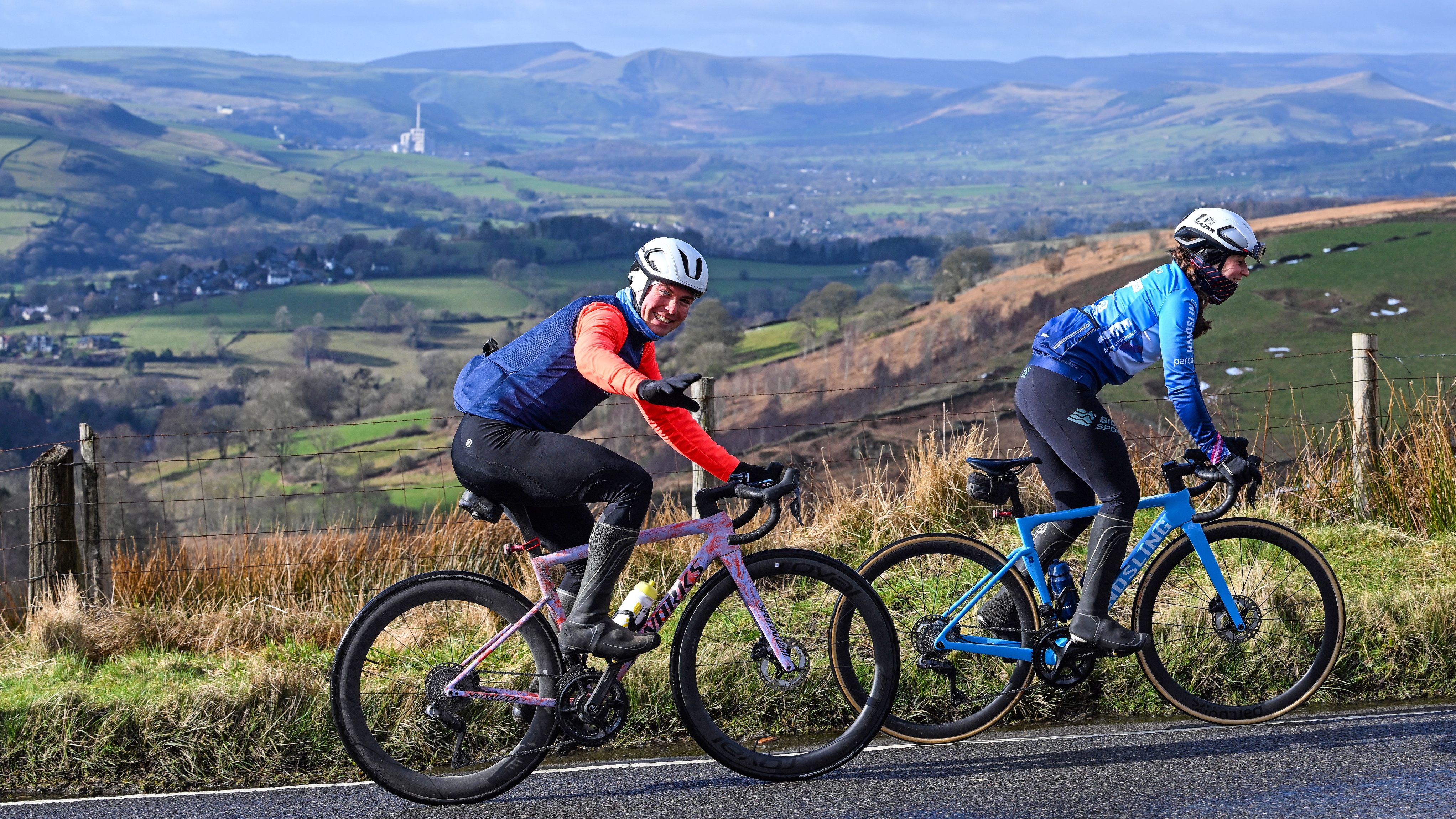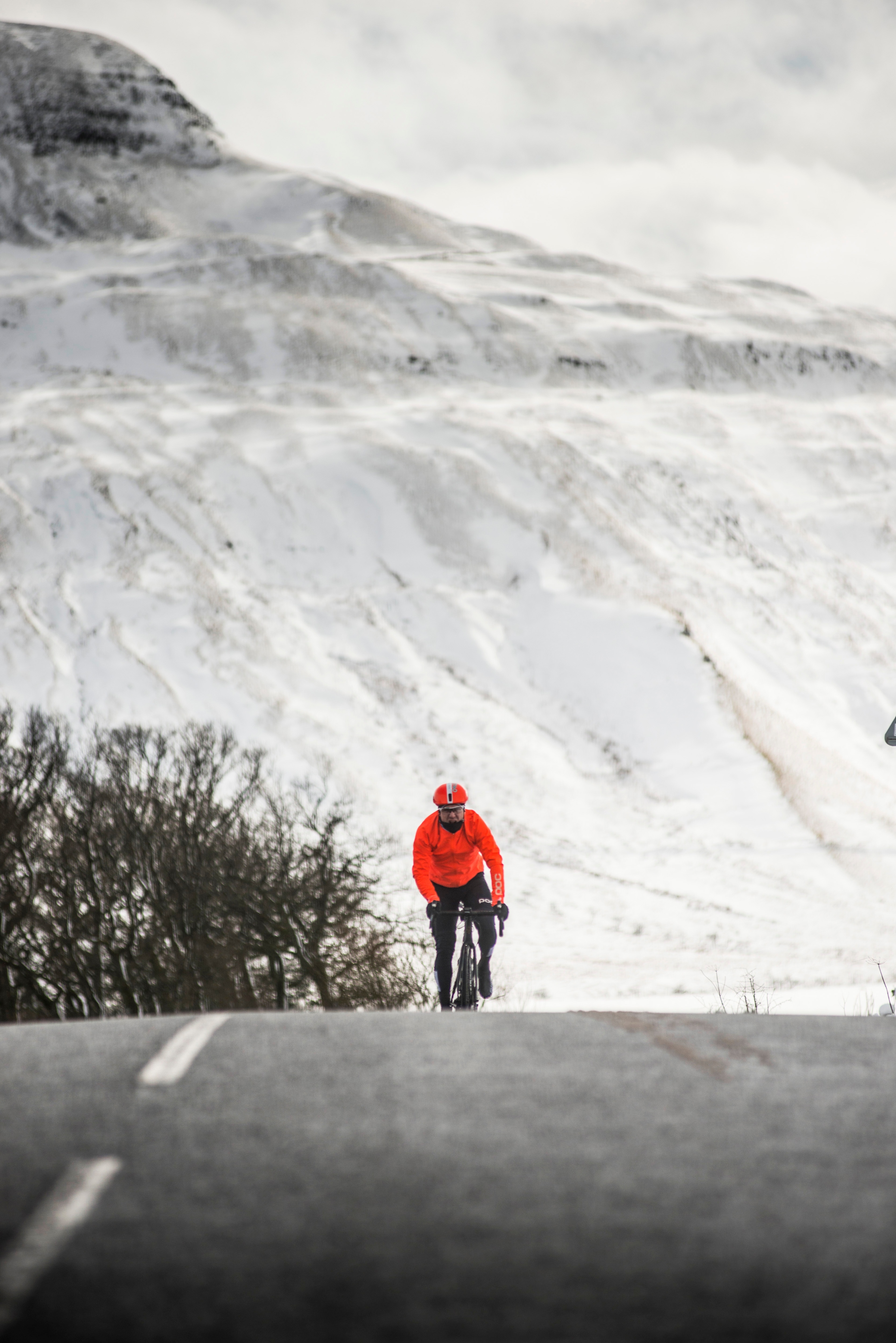It’s Sunday morning. The sky’s clear, sending temperatures plummeting. Your breath’s seen as you chat to your biking crew whereas ready for the latecomer – yep, there’s all the time one – to reach. There may be a lot rubbing of gloves, shoulder shrugs and shaking of legs in a forlorn effort to maintain heat. You’d all be effective if solely you would simply get going. Or would you?
Because it occurs, there was some dangerous information on the chilly entrance. In line with a current research within the Journal of Utilized Physiology, letting your self get chilly is an enormous mistake. It might imply you trip slower. The truth is, there are myriad the reason why it’s tougher to trip at your finest through the winter. However there’s a silver lining to this gloom: you now not need to beat your self up about these common speeds being a bit decrease on chilly rides. We’ll heat your biking cockles and preserve you fired up for winter driving.
Scorching matter
Many people would possibly fear concerning the warmth holding again our progress. However the chilly’s seen extra as an irritant, a discomfort, than a hindrance. The truth is, a 1999 research within the Journal of Utilized Physiology confirmed efficiency really improved when coaching at 3°C in comparison with 20°C. It is because warmth is an inevitable, undesirable byproduct of burning vitality. “We’re inefficient human engines,” says Dr Michael Kennedy, affiliate professor of kinesiology on the College of Alberta, Canada. “Of the vitality consumed, we solely use round 25%. A lot of the remaining 75% is launched as warmth. That’s why once we train, we naturally warmth up.”
Getting in chilly
More moderen analysis, printed in the identical journal, contradicts that 1999 paper and reveals that the chilly slows us down. In 2024 a workforce from Brock College in Canada examined the consequences of cold-air publicity on endurance capability, utilizing completely different ranges of chilly pressure, starting from pores and skin cooling to core cooling. “We needed to see the dose response of chilly at completely different ranges,” says Stephen Cheung, one of many scientist authors. “The degrees have been thermoneutral, pores and skin cooling solely; core cooling of -0.5°C; and core cooling of -1.0°C. The ten topics rode at 70% of their peak energy output to exhaustion.” The researchers discovered that pores and skin cooling by itself diminished train time by round 30%. Each core-cooling protocols additional diminished this by one other 30%.

Research have proven conflicting outcomes
(Picture credit score: Future)
There was one key distinction with the Brock research: the topics began chilly. “Typically, research into the chilly and efficiency would see individuals enter a chilly lab and start exercising,” says Cheung. “In our research, they have been chilly beforehand and, regardless of exercising fairly arduous, they simply couldn’t heat up sufficient to take care of efficiency.” Pre-cooling concerned sitting in a temperature-controlled chamber at 0°C for half-hour with a fan producing a wind velocity of 1 metre per second till pores and skin or core dropped to the required temperature. So, what’s occurring physiologically that hampered efficiency?
At a skin-cooling stage, peripheral blood vessels constrict in an effort to protect warmth. This reduces bloodflow and the stream of oxygen to the muscle tissue. At a deeper stage, shivering interferes with muscle contraction and coordination, and should itself fatigue the muscle tissue. “How oxygen is used additionally adjustments,” says Cheung, explaining that oxygen is much less effectively transported from blood to muscle. Chilly temperatures harming endurance by hastening the onset of fatigue may not come as a shock, however the massive takeaway from this research is the distinction between driving within the chilly and being chilly earlier than you begin driving.
Drift
Fortunately, there are methods to fight the chilly. The primary is by warming up earlier than you permit the home – guaranteeing good blood-flow to the peripheries. “As soon as blood-flow is shut down, it’s arduous to reopen the vessels,” says Professor Mike Tipton, a thermoregulation specialist on the College of Portsmouth. “In our chilly research, we have now individuals stroll or jog up and down a staircase for round 10 minutes to get the blood flowing. One strategy to inform should you’re warmed up is to put your fingers in your lips.” He explains that heat lips sign vasodilation, indicating you have got a heat physique too. A simple pre-ride warm-up is spending 10 minutes on the indoor coach. In the event you’re at a winter race, depart all of your heat equipment on till the final minute.
The newest race content material, interviews, options, opinions and skilled shopping for guides, direct to your inbox!
On-bike clothes can be necessary, in fact. “Know {that a} man within the chilly will not be essentially a chilly man,” says Tipton. “That’s a quote from train physiologist David Bass from the Nineteen Eighties, highlighting that we’re extra excited about pores and skin tissue temperature than air temperature.” His level is that chilly air may be insulated towards. “Relating to the fitting clothes, we’re speaking about layering.”

Warming up earlier than you permit, and, sporting the fitting layers might make all of the distinction
(Picture credit score: Future)
Right layering means insulating simply sufficient to maintain you heat however not a lot that it induces extreme sweating. “We all know that sweating instantly contributes to your thermal consolation,” says Kennedy. “The areas the place sweat in your pores and skin issues most is the higher again, neck and higher chest.” In the event you overdress and train arduous, sweating closely, as quickly as you scale back the tempo and funky down, the dampness has a rapid-chilling impact. “Put on clothes that’s breathable but additionally wind resistant,” says Kennedy, hinting on the windchill impact. If it’s 5°C and also you’re driving at 20mph towards a 10mph headwind, the windchill temperature is -1°C. “Ideally you need air gaps between your base layer and bike jersey, between bike jersey and jacket,” provides Kennedy. “These gaps keep a microclimate and protect consolation. Be sure that the bottom layer is shut towards the pores and skin to assist wick away moisture.”
Wicking is the act of drawing sweat from the physique to the outer floor of the material. Merino wool and polyester are good decisions, as they don’t maintain moisture. Windstopper materials blocks the chilliness, and sun shades with clear lenses forestall the eyes from streaming. “If it’s actually chilly, apply Vaseline in your lips and nasal passages as a result of this cuts chilly publicity too,” Kennedy says. Insulating gloves are important, as is a neck-warmer. “Masking your mouth and nostril is a good suggestion,” says Kennedy, “and up to date analysis has discovered that sustaining nostril temperature lets you combat off inhaled viruses.”
Past your wardrobe, route selection can be price interested by. “Go for longer, sustained endurance on the flat reasonably than intervals with a lot of stop-starting or hills with tough descents,” says Cheung. “The latter could have you overheat after which be soaked with sweat that cools you down an excessive amount of. It’s additionally safer, whereas on slippery surfaces, to be driving at a gentle tempo.” In case your route is flanked by hedgerows, even higher, as the quilt offers shelter from the windchill.
Sluggish burn
This ahead planning will preserve you heat, however physics should still dictate that you simply trip slower. “Firstly, your bike’s inevitably heavier and fewer aerodynamic due to equipment like mudguards and lights,” says Cheung. There’s additionally the truth that colder tyres are slower tyres as a result of stiff rubber much less simply deforms and thus rolling resistance is greater.
“Whereas layering will preserve you heat, extra clothes layers ends in extra friction between layers,” provides Cheung. “The truth that there’s much less roadside foliage means you’ll endure larger resistance from the wind, too, which can sluggish you down. And there’s the bodily indisputable fact that air is denser when chilly, which means you face extra air resistance.”
Scorching air being sooner is one purpose why velodromes crank up the thermostat; Lee Valley, for instance, basked in 29°C for the 2012 Olympic observe programme. How a lot does dense, chilly sluggish you down?
Sidestepping the complicated maths, in a summer season temperature of 20.9°C, you’re taking a look at air density of 1.20kg per metre cubed. In the meantime, a winter temperature of 6.9°C ends in 1.27kg per metre cubed. This greater air density cranks up air resistance, which interprets to a noticeable 0.5-1kph (0.3-0.6mph) distinction at above 32kph (19.9mph).
Frozen by numbers

(Picture credit score: Andrew McCandlish for Future)
25 instances sooner – charge of warmth loss from moist toes in comparison with dry. It is likely to be time to spend money on these waterproof booties
10 days – quantity of chilly publicity that may alter your notion of the chilly. You have to be naturally ‘hotter’ by February
40% – the quantity by which chilly temperatures can scale back thirst, in line with analysis
600 kilometres – distance cycled from Antarctic coast to the South Pole, first achieved by British adventurer Maria Leijerstam in 2013
12% – of winter journeys taken by bike within the Finnish metropolis of Oulu, bordering Lapland, regardless of temperatures dropping to -30°C within the depths of winter (in comparison with 2% in England)
-0.53°C – the temperature at which human tissue freezes, aka frostbite. Hold these tootsies heat!
Hit the highway operating

Most membership runs will decelerate over winter
(Picture credit score: Future)
The place does that depart us as we face the subsequent couple months of chilly rides? Decamp indoors and clamp your self to your coach? Not essentially, although the coach has its place, particularly as a warm-up device. Whether or not you sprint up and down your staircase just a few instances or do some vigorous star jumps, warming up earlier than you head out will get the blood flowing to your working muscle tissue, providing you with a head-start towards the chilly.
Alternatively, should you stand round for half-hour whereas your punctually challenged mate checks and rechecks their bike, your plummeting core temperature – in addition to being damned uncomfortable – might hurt your endurance efficiency. Make sure you layer eff ectively, so that you’ll be heat however not sweating closely. And if it’s actually chilly, cowl your mouth with a balaclava. Maintaining heat is the important thing to having fun with your winter driving and minimising damaging eff ects of decrease temperatures.
You may’t beat Mom Nature, settle for it. This isn’t the season for PBs, however reasonably for consistency. Layer up, heat up, get on the market and revel in.
